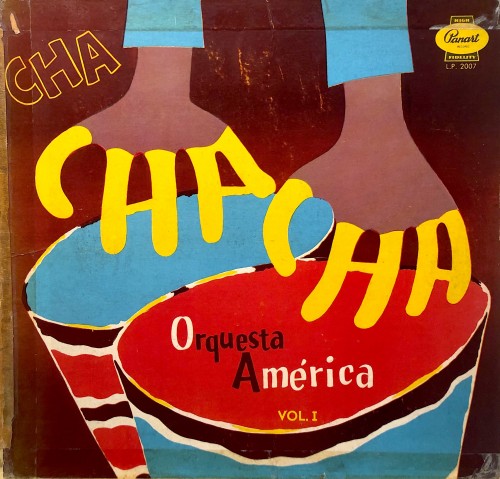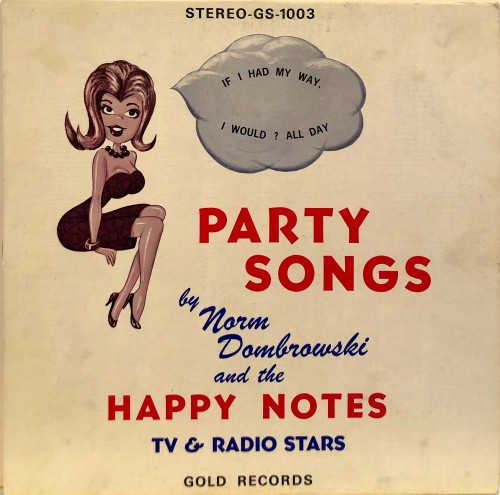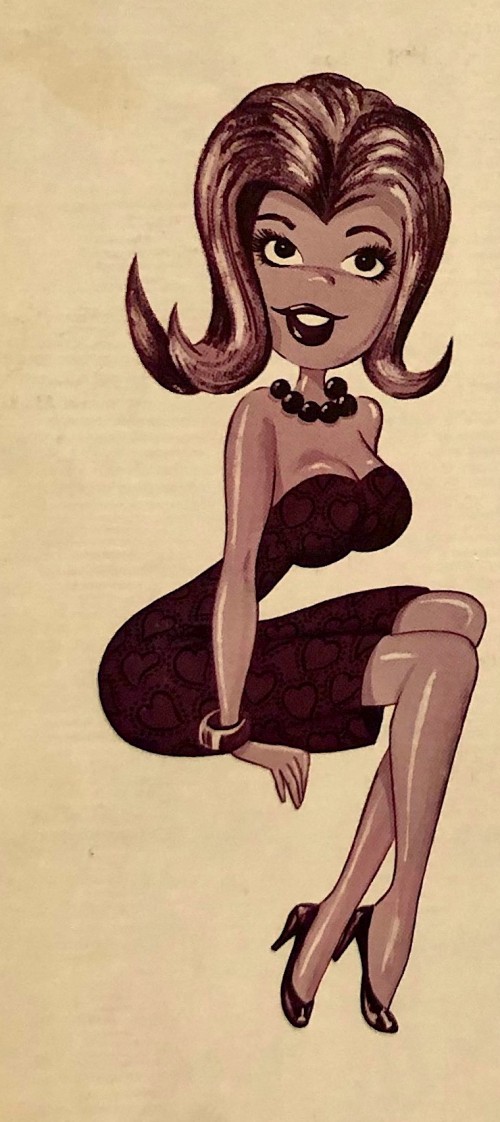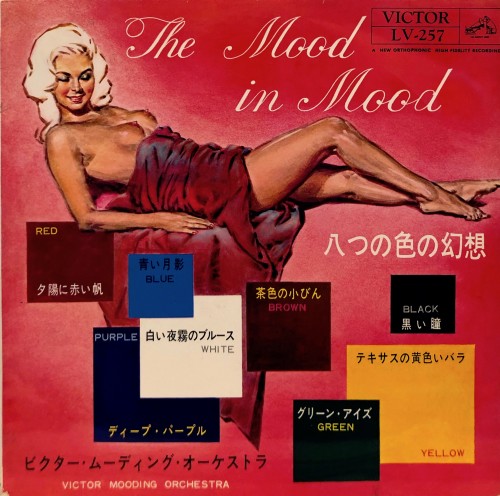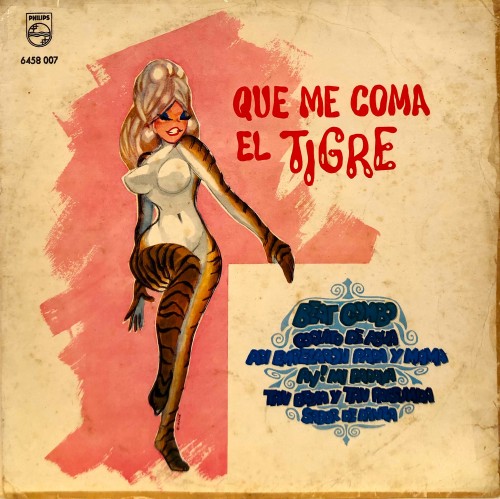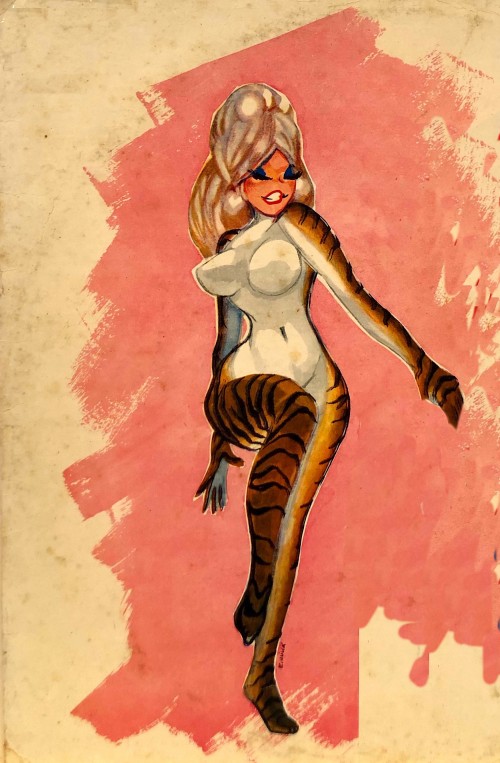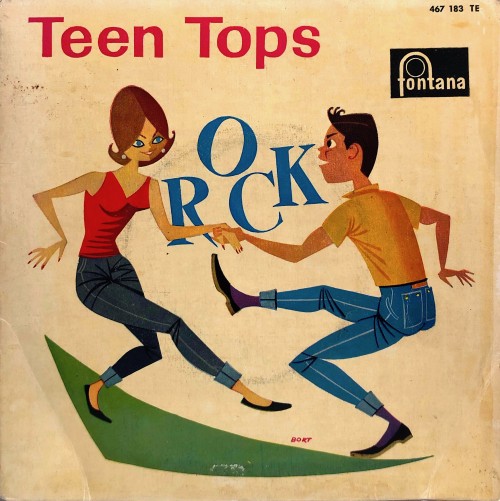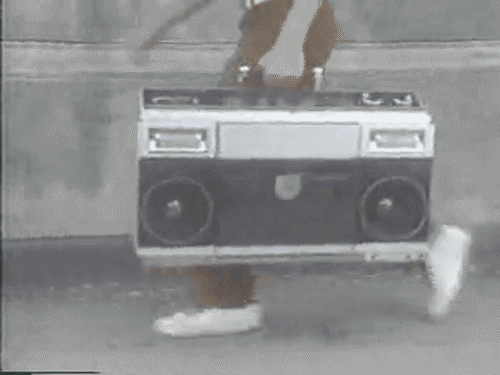Illustration
You are currently browsing the archive for the Illustration category.
Bozo’s tall tale
“Bozo Meets the Moon Goon” Bozo “the Capitol Clown” featuring Larry Harmon as Bozo. Capitol Records EAP-1-3250 (1959) . From Associated Press:
Larry Harmon dumped from Clown Hall of Fame
years, promoter and entertainer Larry Harmon claimed to have both
created the character and said he was the original.
Now the International Clown Hall of Fame in downtown Milwaukee is formally
endorsing a different version: Capitol Records executive Alan Livingston
created Bozo for recordings in 1946, and the late Vance “Pinto” Colvig was
the first person to play the clown.
On Friday, the hall is posthumously inducting Colvig as the first Bozo.
That reverses the hall’s “Lifetime of Laughter Award” given to Harmon in
1990 as Bozo’s creator. The hall has since taken Harmon’s plaque off its
honor wall.
Kathryn O’Dell, the hall’s executive director, said the hall was duped to
believe Harmon created Bozo and didn’t find out the truth until ABCnews.com
columnist and entertainment producer Buck Wolf reported Harmon was wrongly
laying claim to the character.
“It was something that was hinted at and hinted at and we started to do
research and sure enough the information we were getting from outside
sources was true,” O’Dell said.
While Harmon popularized the character since the 1950s, Livingston and
Colvig were first to develop it, she said.
Colvig’s voice was used in the first recordings and he wrote some of Bozo’s
first songs, made the first live appearances and was the first Bozo on
television.
Capitol Records Inc. sold all the rights to Bozo the Capitol Clown, except
the masters for the previous records, in the mid 1950s to Harmon, who a few
years earlier had answered a Capitol casting call to be a Bozo.
Harmon ended up training more than 200 Bozos over the years and turning Bozo
into a character for 156 cartoons that he sold in the United States and
around the world.
Harmon, 79, said from his home in Los Angeles that he’s saddened to have the
hall remove his plaque and he denied misrepresenting Bozo’s history.
“Isn’t it a shame the credit that was given to me for the work I have done
they arbitrarily take it down, like I didn’t do anything for the last 52
years,” he said.
He said he has always acknowledged that Livingston created Bozo The Capitol
Clown. But he said he created Bozo’s personality and image today as Bozo The
World’s Most Famous Clown.
“What I created for the world was me and my image, what I sound like, what I
look like, what I walk like, what the costume looked like, with my animation
studio,” he said.
Bozo The Capitol Clown had red mop hair and spoke with a drawl. Harmon’s
Bozo had bright orange-red yak hair and spoke faster and made up an entirely
new vocabulary, like “wowie-kazowie.” The laugh was also different.
from abc.com:
In light of claims from officials at the International Clown Hall of Fame
that Harmon misled the museum when he was honored for creating TV’s Bozo,
the Wolf Files investigated the matter.
An extensive review of publications and materials from Harmon’s office
and numerous press interviews indicates that Harmon has frequently stuck a
Bozo-sized, big, red, floppy shoe in his mouth — describing himself over the
years as Bozo’s creator and the man who created Bozo for TV.
Both assertions are highly questionable. When the Wolf Files approached
Bill Lange, founder of the Clown Hall of Fame, about Harmon and the Bozo
legacy, he said: “I now regret that we gave him that award. Personally, I
think Larry Harmon is a jerk and other clowns deserve some credit for Bozo.”
Recently, the Hall of Fame changed Harmon’s credit on its Web site from
Bozo’s “creator” to his “franchiser” — and no one has argued that Harmon is,
indeed, a world-class marketer.
But questions remain: Has one man tried to rewrite clown history and
take all the credit for a pop culture institution that touches millions of
children? What about the origins of that beautiful orange-wing hairdo and
those “wowie-kazowie” custard pie fights? And if Larry Harmon isn’t the
original Bozo, who is?
Harmon’s Bozo often said he had one lesson to teach children, above
all: “It’s nice to be important, but it’s more important to be nice.” Now,
it would seem, Harmon might want to listen to his own internal Bozo.
Clowning With History
Harmon, a 73-year-old show business entrepreneur and performer, denies he
ever tried to rewrite clown history. He declined to be interviewed. But in a
written statement, he says there have been thousands of articles about him
and some are simply wrong. In the statement, he says he has always
acknowledged that Bozo was created by another man.
“In some of those articles, I have been misquoted and blatantly
misrepresented,” the statement says. “I cannot be responsible for misquotes
or incorrect information printed by the media and routinely recycled over
and over a long period of time.”
But to believe Harmon, we must also believe The Associated Press, The
New York Times, Los Angeles Times, and at least six other major newspapers
misquoted or misunderstood him, often times repeatedly.
Moreover, Harmon offered no explanation for a 1996 licensing brochure
copyrighted by his production company and titled “50 Years of Clowning
Around With Bozo.” It begins:
“Bozo. You can’t even say it without smiling. Bozo the Clown, created
by Larry Harmon half a century ago, has gone from children’s recording star
to international TV star, joining the American vocabulary along the way.”
[Italics added.]
The Father of Bozo Speaks
To Bozo’s true creator, Alan W. Livingston of Beverly Hills, Calif., Harmon’
s claims have been hurtful, though somewhat amusing.
“I hired this guy years ago. He was an out-of-work actor at the time
and now he is taking credit for my work,” Livingston says. “It is such a
joke.”
In 1946, Capitol Records asked Livingston to write and produce a
children’s record. He delivered “Bozo at the Circus,” the first read-along
recording. “Kids, whenever I clap my hands, you turn the page,” Bozo would
say. It sold more than a million copies, and a clown legend began.
Livingston worked with an artist to develop Bozo’s basic look. The
clown’s name, now a household word, was born during a late-night
brainstorming session. Circus folk had long used “bozo” to refer to tramp
clowns. But Capitol somehow copyrighted the whole enchilada and hired actors
such as Harmon for promotional purposes.
Harmon’s Bozology
While Harmon regularly accepts the title of Bozo’s creator, he got specific
in 1990, according to an Aug. 29 edition of the Chicago Tribune, in which he
was reported as saying he based the clown’s name on a famed Gypsy humorist
named “Bozolowski.”
“What stuck with me was those four letters,” he told the paper. “It was
a name everyone can pronounce. I tried it in all the languages. It came out
the same.”
He then went into detail about how he designed the hair and other
characteristics: “I knew I wanted sort of a cotton-like fabric that I curled
up and brought out to the sides,” he was quoted as saying. “Red is one of my
favorite colors. Red, white and blue I love. That’s America.”
Harmon has also claimed he created Bozo for TV. Indeed, beginning in
1959, he did raise a clown army of some 200 Bozos, putting a Bozo on local
TV in almost every major city and in countries such as Thailand, Greece and
Brazil.
Yet research shows that Bozo first appeared in 1949 on KTTV, channel 11
in Los Angeles. Pinto Colvig, who served as Bozo on Livingston’s records,
brought the character to life. Harmon was not involved.
Colvig lived the quintessential clown’s life. As a teenager, he ran off
and joined a circus, eventually working for Ringling Bros. He also served as
the voices of Goofy and Grumpy in Walt Disney cartoons and helped songwriter
Frank Churchill write “Who’s Afraid of the Big Bad Wolf.”
“Those were great days in TV,” recalls Lee Carrau, floor manager on the
first Bozo TV show. “It was a live show, two cameras in a small studio, with
animals and screaming kids. We never knew what would happen, monkeys jumping
around everywhere. Every week was absolute pandemonium.”
Carrau, 76, remembers Colvig well. “He used to go to the bar after the
show in Bozo costume for laughs,” he says. “He was a fun, fun guy.” Asked
about Harmon, Carrau said, “Never heard of the gent, and I knew everyone on
the show.”
Clown for Sale
Capitol closed its TV operations in the early 1950s. Harmon and some
partners subsequently bought the rights to Bozo, except for the audio
recordings. From there, Harmon went market-to-market selling the Bozo
concept of a live clown show for kids in the dawn of the TV age. “Larry
deserves credit for licensing Bozo,” Livingston says. “He’s made it last for
a long time.”
Livingston went on to sign Frank Sinatra and the Beatles to Capitol
Records. He didn’t waste too much time correcting Harmon, he says, because
Bozo is not tops on his resume. But it’s still a source of pride. The Clown
Hall of Fame now honors Livingston, too. But he’d really like to see
recognition for his old friend Colvig, who died of lung cancer in 1967.
“Pinto did a great job,” Livingston says. “He got Bozo’s voice down
perfectly and he really knew how to make kids laugh.”
Which Bozo Is Your Bozo?
The Bozo you saw on TV depends on where you grew up. Through Harmon’s
licensing, many men portrayed the clown.
The most famous Bozos: Willard Scott in Washington (yes, the NBC Today
show weatherman), Frank Avruch in Boston (whose show has been syndicated in
markets with no local Bozo), and Bob Bell in Chicago (who started the
longest-running children’s TV show still on the air, now starring Joey D’
Auria).
Altogether, Bozo shows have logged more than 50,000 hours of recording
time, a Guinness record.
At times, Harmon portrayed Bozo, though he never starred on a show for
a sustained period. Among his performing highlights: training at zero
gravity with Apollo astronauts and providing Bozo’s voice in cartoons.
The cartoons reportedly once bore a credit line for Livingston as Bozo’
s creator. That has been deleted over the years. A recent videocassette of
the cartoons pictures Harmon in greasepaint with the caption describing him
as, “The Original Bozo.”
Harmon has maintained that he trained his Bozos and their writers. But
some people involved in the shows and their families feel he overstated his
involvement.
In a 1984 magazine article in the Chicago Tribune, Harmon admitted that
Bell was self-taught. “He was a natural Bozo,” Harmon said. “Bob was able to
jump into my soul … He was able to reach into my mind and my emotions,
because Bozo was me … And Bob has my love for the children, my sensitivity,
my understanding.”
The article quotes Bell as recalling a cooler relationship with Harmon:
“I haven’t seen him for years. He never calls. He never comes around. Even
when he’s at the station, contracting for his cartoons, he never stops in
and says hello. Never.”
The Hard Way to Greasepaint Fame
Bell’s daughter, Joan Roy, says that Harmon failed to offer his
congratulations when Bell was inducted into the Clown Hall of Fame in 1996
and Harmon made it difficult for Bell to attend the ceremony in his Bozo
greasepaint. “My father was 74 and frail,” Roy says. “It was outrageous.”
In artwork from the ceremony, Bell appears as the only honored clown
out of makeup, a sure disappointment to fans.
It was only after Bell’s successor, D’Auria, appeared as Bozo at
another Clown Hall of Fame event that Harmon began to press for his own
award, recalls Lange, the Clown Hall of Fame founder.
“It is a shame that Harmon tried to take credit for creating Bozo,”
says Kathryn O’Dell, the Hall of Fame’s executive director. “He might have
won the award anyway because of the job he did marketing Bozo. But he really
bamboozled us.”

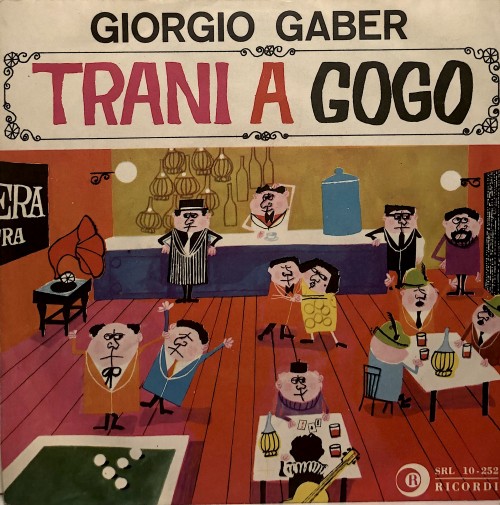


 (11 votes, average: 3.64 out of 5)
(11 votes, average: 3.64 out of 5)
